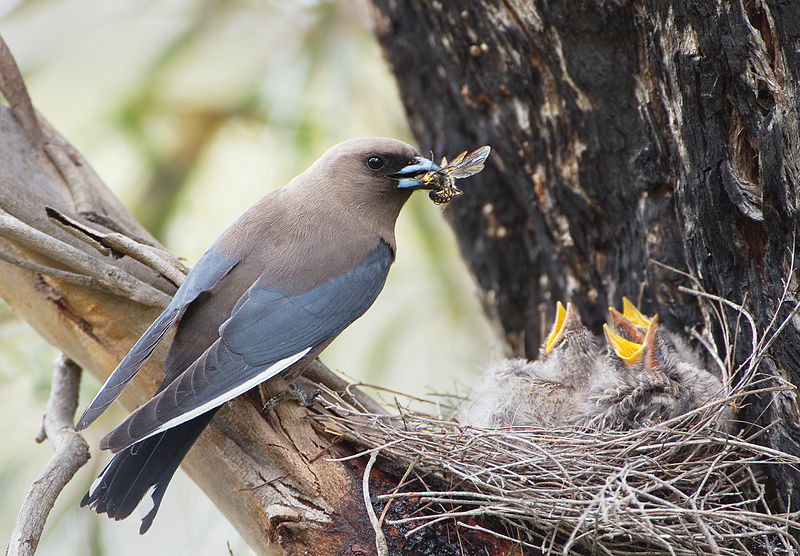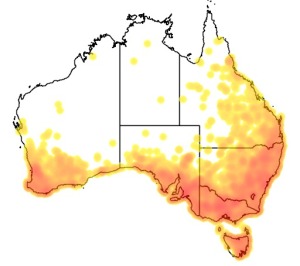Colours
Distinguishing features
The Dusky Woodswallow is medium sized and swallow-like, with a dark brown hue, but there have been instances where the bird has appeared grey. The birds have a black patch in front of the eyes, and grey (sometimes also black) wings with white streaks on them. The Dusky Woodswallow has a black, white-tipped tail with a silver underwing. The birds have a blue-grey bill capped with black. (Wikipedia)
Size
- Up to 19 cm (Length of specimen)
Wingspan
- Wingspan data is not yet available.
Synonyms
Distribution
Distribution and habitat preferences
They live primarily in open eucalyptus forests and woodlands. They range mostly from Atherton Tableland, Queensland, down to Tasmania and west to Eyre Peninsula, in South Australia.
They roost communally, usually nocturnally. During the breeding season, they nest in large flocks to make sure to keep predators away from young. These flocks can include 20-30 birds.
They adhere to seasonal migration and movements. The birds are a nomadic species, and tend to move quite spontaneously. However, one certain change of habitat occurs for the south-eastern birds, who migrate northward for Autumn. (Wikipedia)
Diet
The diet of the bird can be varied. They eat various forms of foliage and other grassy material that they find on the ground on in trees and shrubs.
They have been seen eating termites, butterflies and other insects. They also eat nectar from flowers. One notable aspect of their feeding habits is the way they hunt flying insects, which is done by picking them up on their wing. They do, however, also eat their prey from the ground, and they often find inconspicuous places to perch while waiting for prey, such as utility lines and the like. (Wikipedia)


